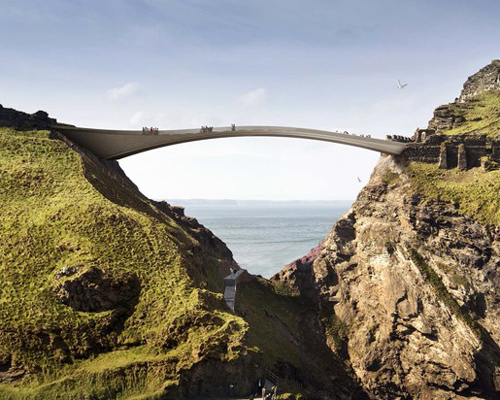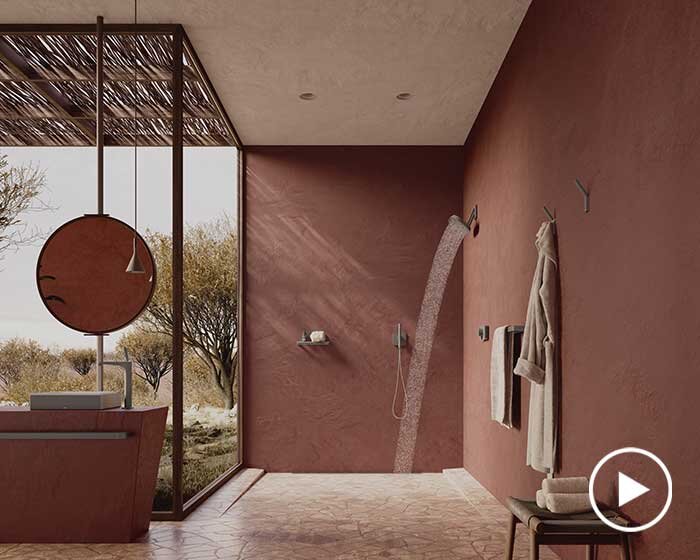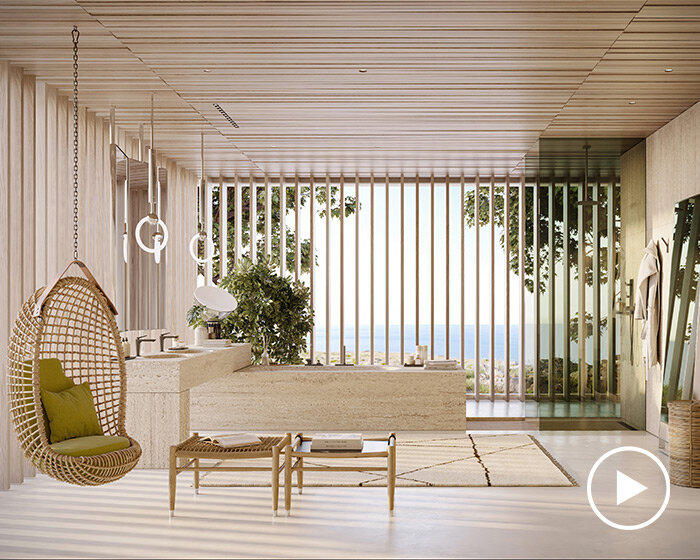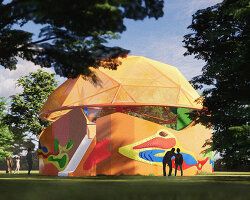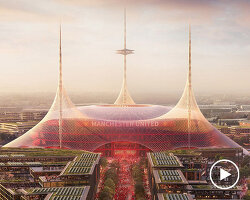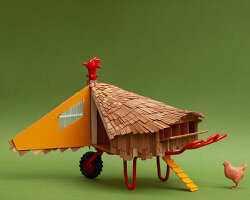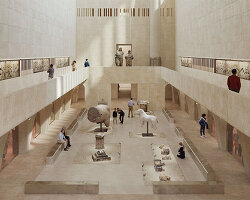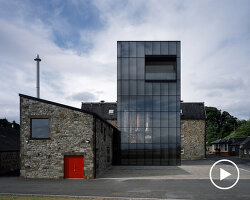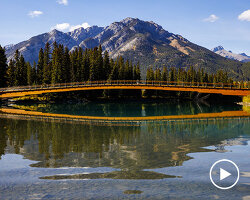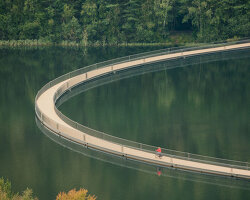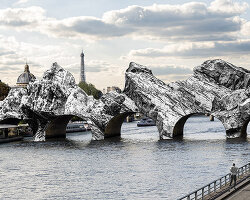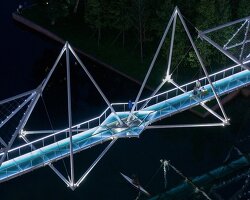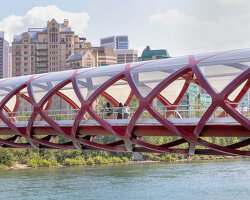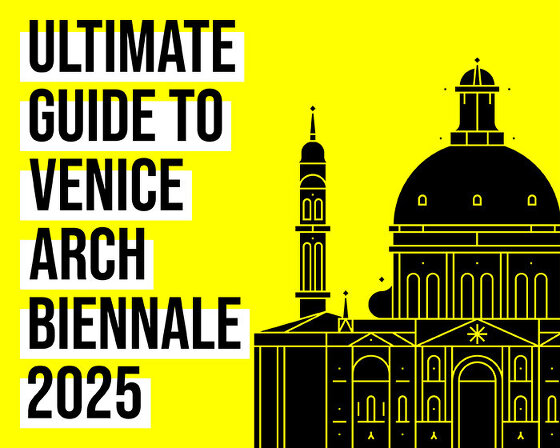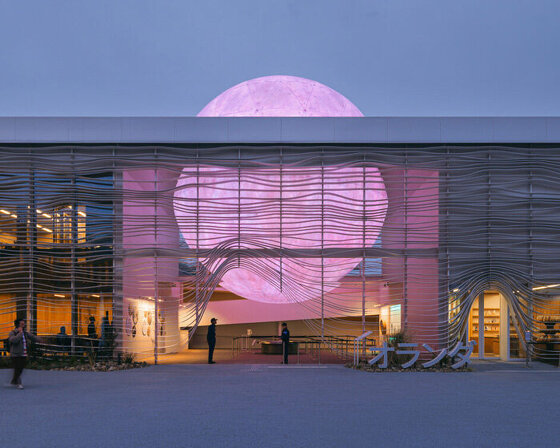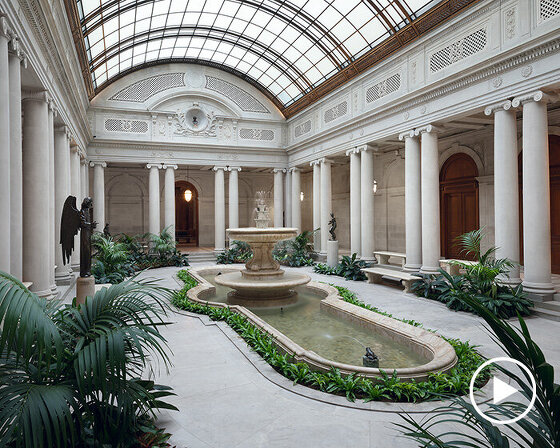UPDATE: on march 23, 2016 it was announced that a team led by ney & partners – with UK-based architectural practice william matthews associates – had won the tintagel castle bridge design competition. the team’s inspiration for their cantilevered solution came from their study of celtic history, and the original drawbridge arrangement of tintagel castle. they propose using local slate for the bridge’s decking and contrasting weathered and non-weathered steel to create finishes which allow sunlight to play on the structure.
graham morrison, chair of the jury, said: ‘this is a strong and confident concept design with a thoughtful geometry that meets the demanding, multi-faceted brief. the team presented with admirable clarity – both at interview and in the written materials. in the end, the jury was persuaded as much by the technical assurance of ney’s proposal, and its buildability, as its aesthetics and sensitivity to the exceptional setting.’
read more about the winning design, and the other shortlisted entries below.
— – —
a shortlist of six teams has been announced as part of a competition to design a bridge for britain’s cornish coastline. the new structure will be situated next to tintagel castle, a medieval fortification located on the peninsula of tintagel island. from 137 first stage entries, six teams were shortlisted and asked to produce initial concept designs. with public feedback encouraged, the proposals remain on display in the tintagel village tourist information centre until december 11th, 2015. the competition jury will then meet in january 2016, with the winner made public in early february. see more on each of the submissions below.
RFR and jean-françois blassel architecte with engineersHRW and WSP
this stone arch bridge has been designed to evoke the solidity of the ancient pathway that once existed in its place. through the use of natural stone, the bridge grows seamlessly from the cliffs, fitting naturally within the dramatic landscape. furthermore, the narrowing form of the granite structure echoes the ‘choke point’ — the ‘din tagell’ — which gave the island its name.
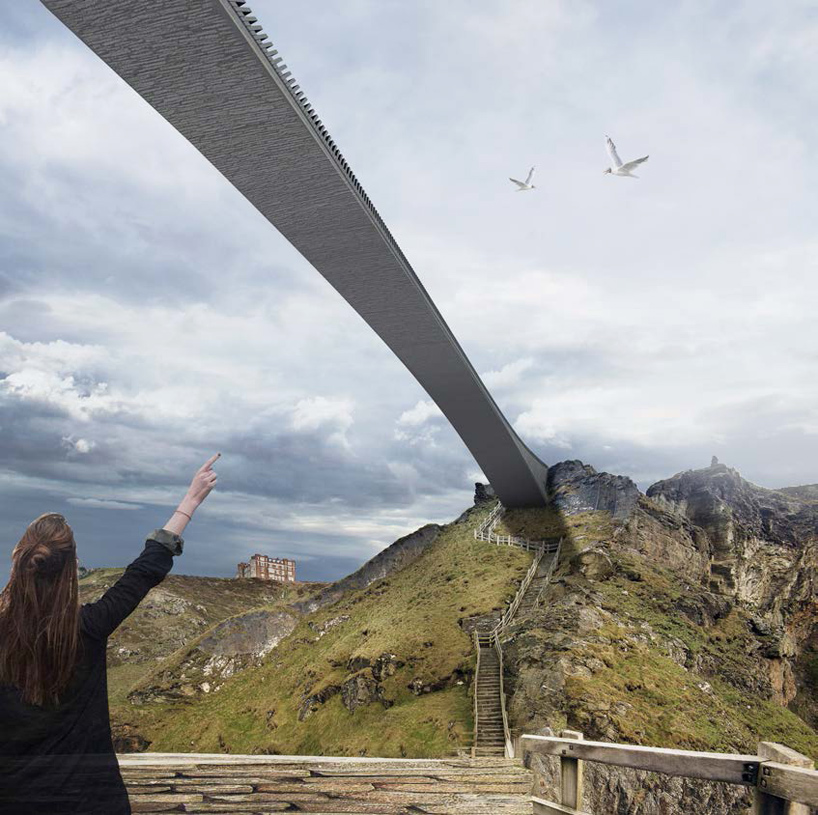
entry by RFR and jean-françois blassel architecte (also main image)
all images courtesy of malcolm reading consultants
dietmar feichtinger architectes with terrell
this proposal by dietmar feichtinger architectes seeks to re-establish the historic walkway to the island. the design replaces the castle’s former wall and historical isthmus virtually, with cables crowned by a linear connection. a bowed steel girder is stressed into a horizontal position by stainless steel plates that are anchored in the slopes of the ravine. this structural principle is an inversion of the forces that one would expect for a structure of this kind. instead of compressed pillars, the bridge is stressed by slender stainless steel plates.
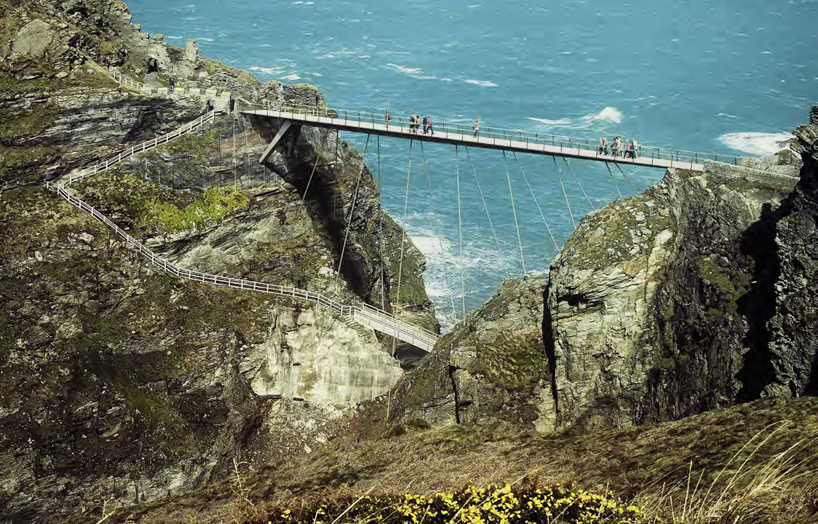
entry by dietmar feichtinger architectes
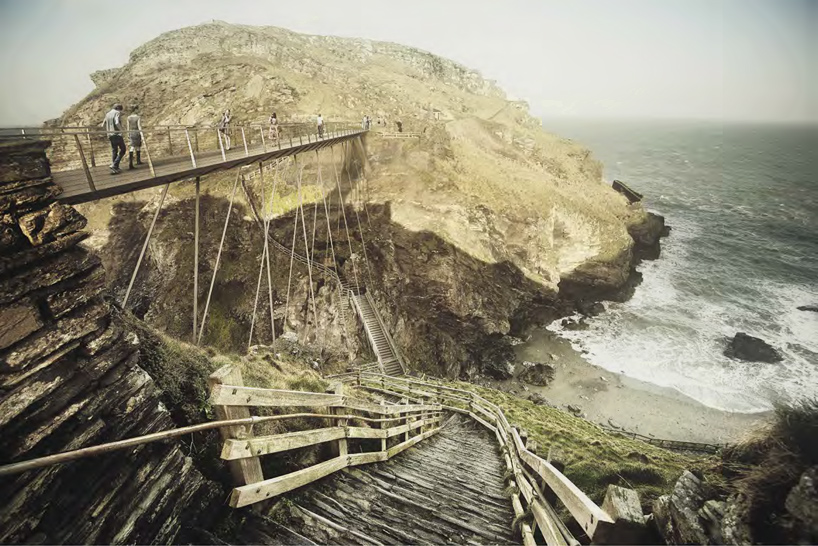
entry by dietmar feichtinger architectes
marks barfield architects with flint and neill, J&L gibbons LLP and MOLA
this beam bridge — the oldest and simplest of spanning structures — seeks to form a robust, yet delicate response to the brief. the material choice is inspired by the historical significance of the site’s mineral resources; bronze handrails and arthurian legend – the excalibur sword. this bronze patination will enhance its appearance and durability – creating a visual link to the natural variations in the rock. the tall, slender, twin pillars supporting the bridge reference the dramatic natural stone stack formations and mining chimneys found along the coast.
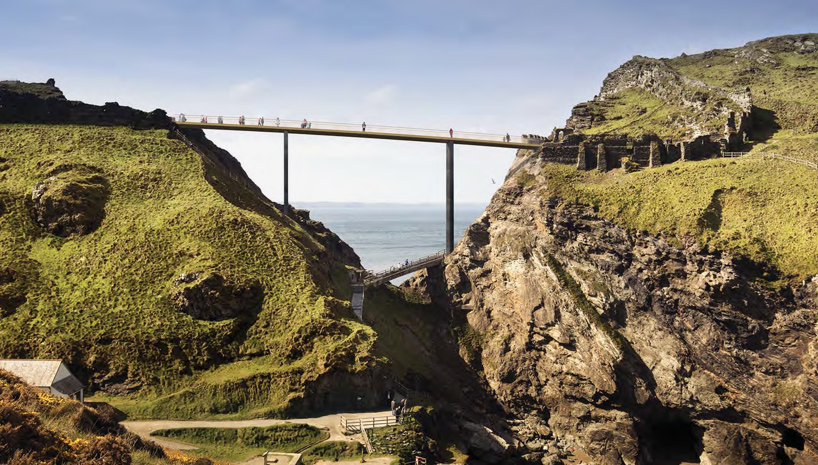
entry by marks barfield architects
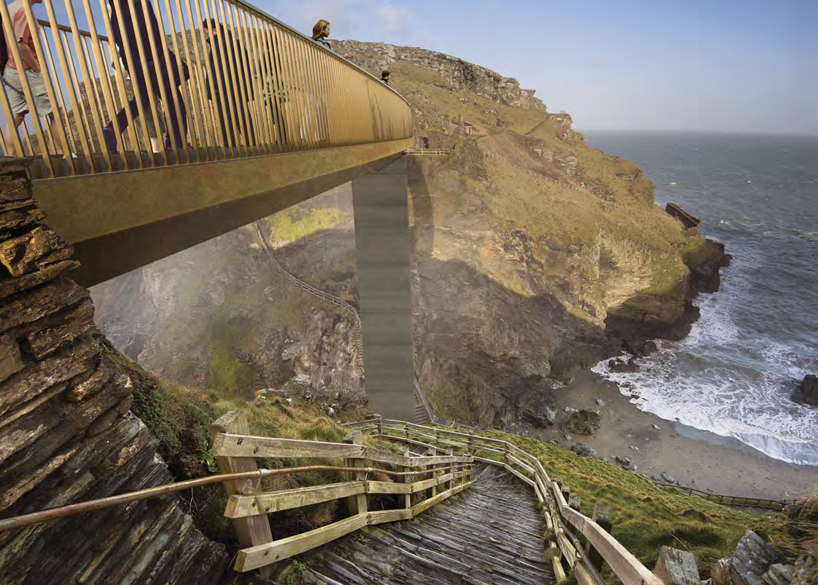
entry by marks barfield architects
ney & partners with william matthews associates
instead of introducing a third element that spans the entirety of the void, this design for the tintagel castle footbridge proposes two independent cantilevers that reach out and almost touch in the middle. the structure — 4.5m high where it springs from the rock face — tapers to a thickness of 170mm in the center, with a clear joint between the mainland and island halves. the narrow gap between them represents both the transition and tension that exists between the mainland and the island.
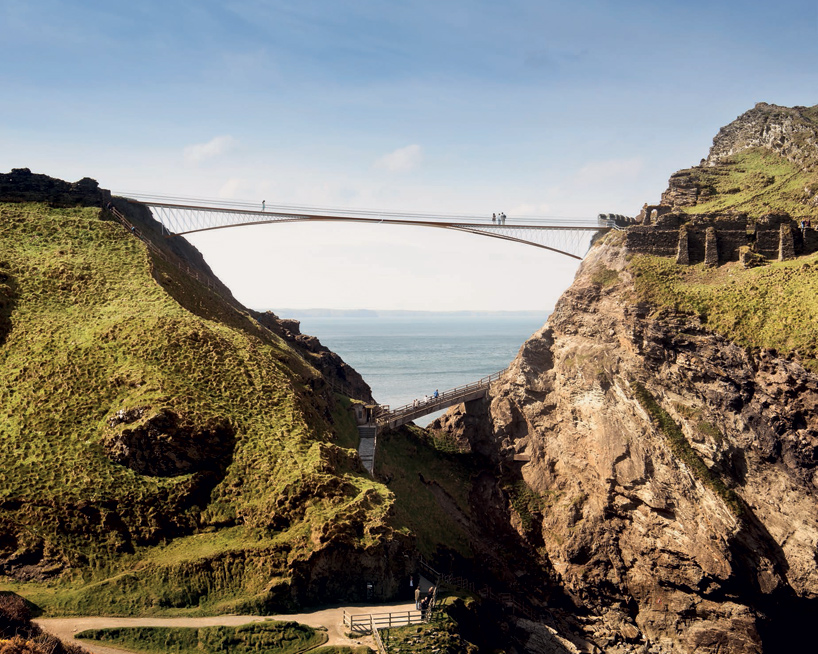
entry by ney & partners
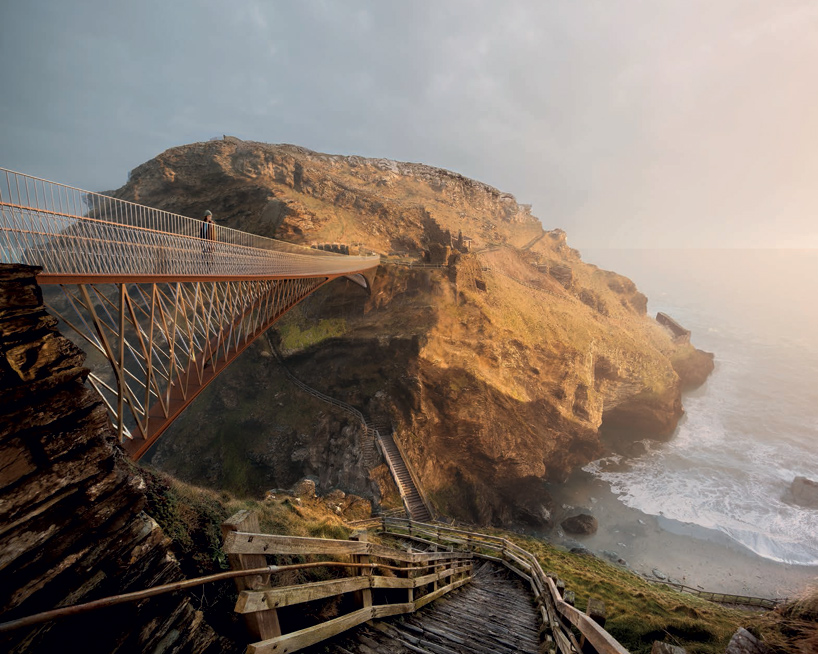
entry by ney & partners
niall mclaughlin architects with price and myers
this design uses a stone arch of cornish granite to spring across the chasm, seemingly tethering the island to the mainland. the arched form is made of stacked stones, while its segmented construction speaks of the compressive force that holds it aloft, as well as of the site’s masonry castle walls. the upper surface of the arch forms a stone path bounded by a handrail of fine bronze balusters that recreates the lost land approach to the castle.
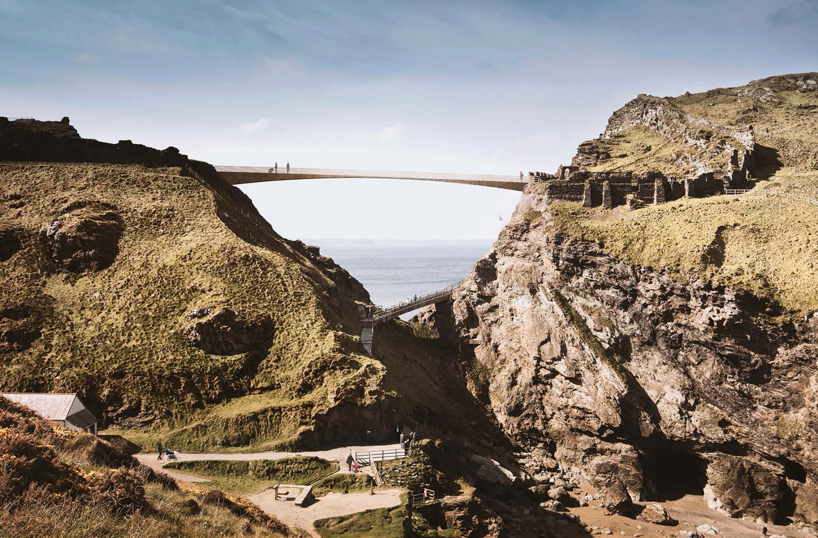
entry by niall mclaughlin architects
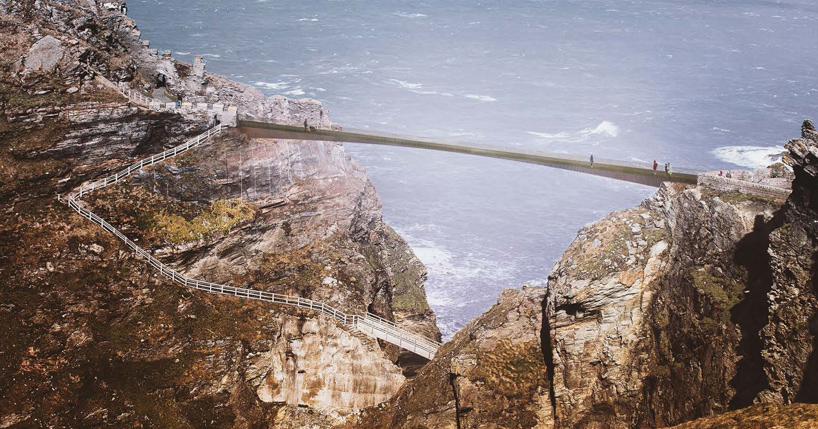
entry by niall mclaughlin architects
wilkinson eyre with atelier one
wilkinson eyre and atelier one have designed a bridge that seeks not to compete with the historic remains, but rather serves to enhance the site’s dramatic nature, while improving accessibility. constructed from oak and stainless steel, the elements of the bridge are made up from a series of small components that are wheeled to site by hand and assembled in-situ. the bridge deck is straight and relatively narrow with stratified components, solid in the center and perforate at the edges, accentuating its linearity. this references the striking abundance of slate at the site – the layering of the material representing a physical reminder of the passing of time.
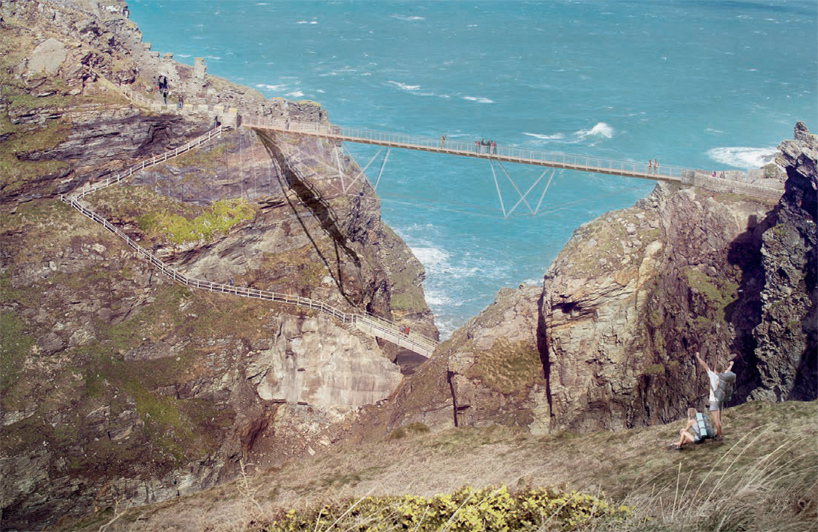
entry by wilkinson eyre
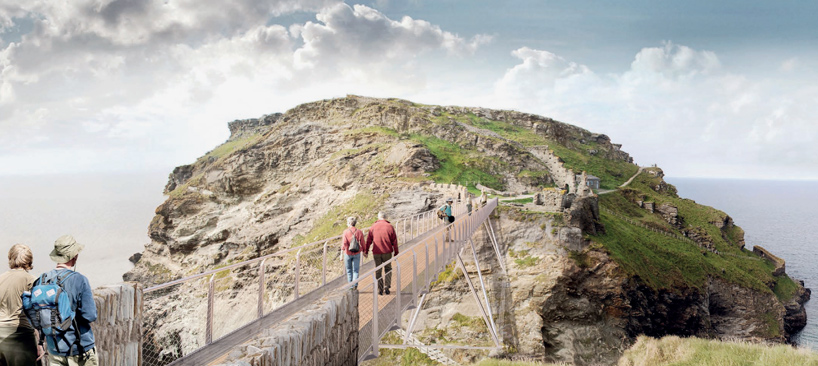
entry by wilkinson eyre
